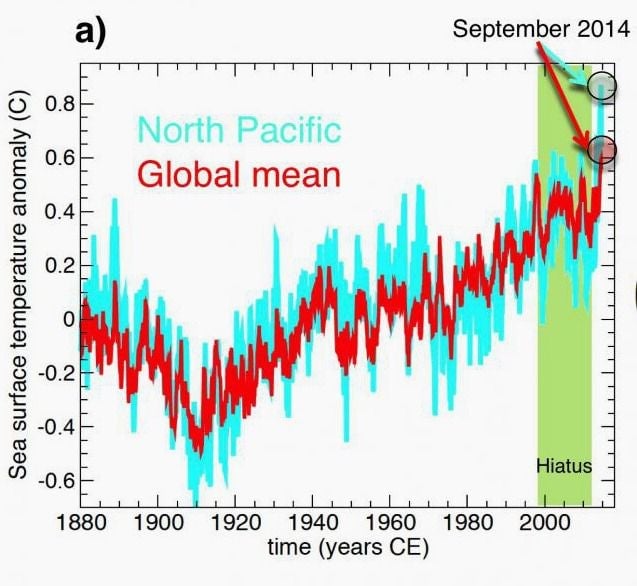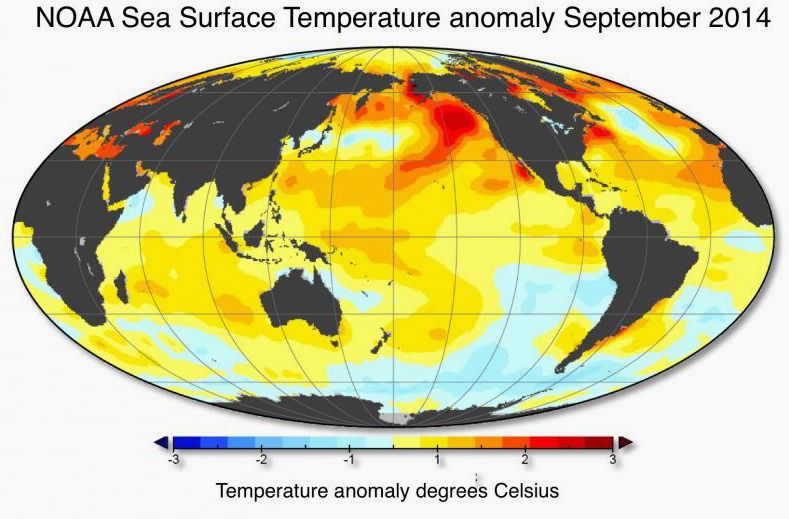The ocean is now warmer than ever before in recorded history
It was cool while it lasted, but the Global Warming Hiatus—that 14-year reprieve in warming ocean waters—is officially over. Global mean sea-surface temperatures are warmer than at any point in time our data began, in 1854, says Axel Timmermann, climate scientists at the International Pacific Research Center at the University of Hawaii-Manoa.


It was cool while it lasted, but the Global Warming Hiatus—that 14-year reprieve in warming ocean waters—is officially over. Global mean sea-surface temperatures are warmer than at any point in time our data began, in 1854, says Axel Timmermann, climate scientists at the International Pacific Research Center at the University of Hawaii-Manoa.
“Record-breaking greenhouse gas concentrations and anomalously weak North Pacific summer trade winds, which usually cool the ocean surface, have contributed further to the rise in sea surface temperatures,” he says.
The 2014 global ocean warming is due largely to the North Pacific, which Timmermann says has “warmed far beyond any recorded value.”

Over the past ten years, great amounts of heat had become locked up in the the West Pacific, which is a planetary hot spot of sorts. At the same time, eastward-blowing summer trade winds and other factors kept that cauldron of balmy water contained—and kept the sea’s surface relatively cool.
As Timmermann describes, starting in Jan. 2014, the North Pacific started heating up unusually quickly. Then in April and May, a gust of westerly winds whipped balmy water toward the North American Pacific coast, releasing into the atmosphere colossal amounts of that same heat that had been trapped for nearly ten years.
The warm temperatures now extend in a thick swath from just north of Papua New Guinea all the way to the Gulf of Alaska. This heating-up of the North Pacific “has shifted hurricane tracks, weakened trade winds, and produced coral bleaching in the Hawaiian Islands,” says Timmermann.

The last time the planet saw record-breaking sea-surface temperatures was in 1998. But that was likely thanks to unusually strong El Niño events that year. (El Niño refers to the phenomenon in which a slackening of westward-blowing winds lets that West Pacific’s hot patch gush eastward toward the Americas, often causing extreme swings in weather and, sometimes, upticks in disease outbreaks.) For the winter of 2014 and spring of 2015, that US government’s Climate Prediction Center projects a 58% chance of El Niño.